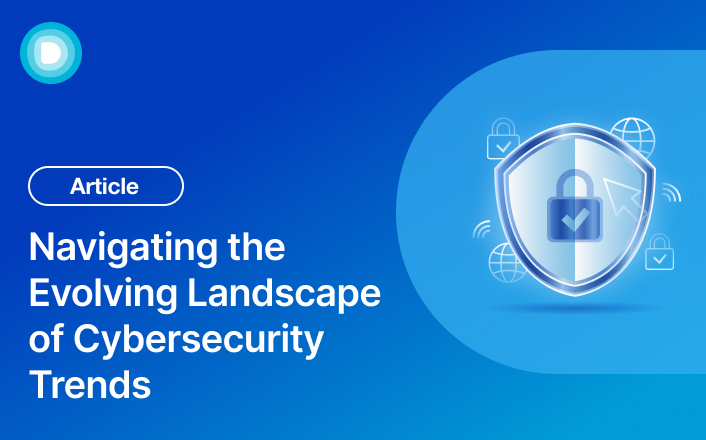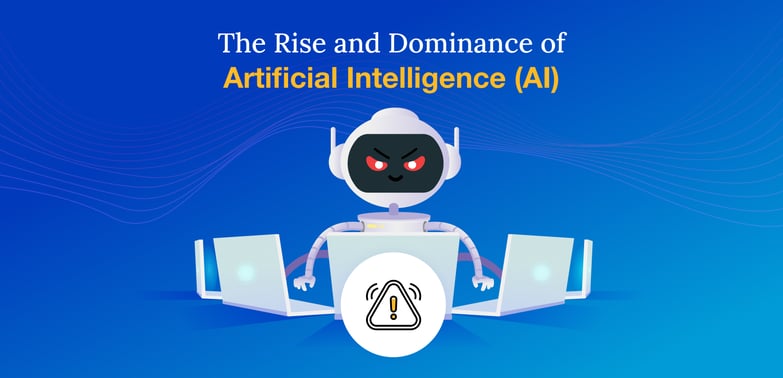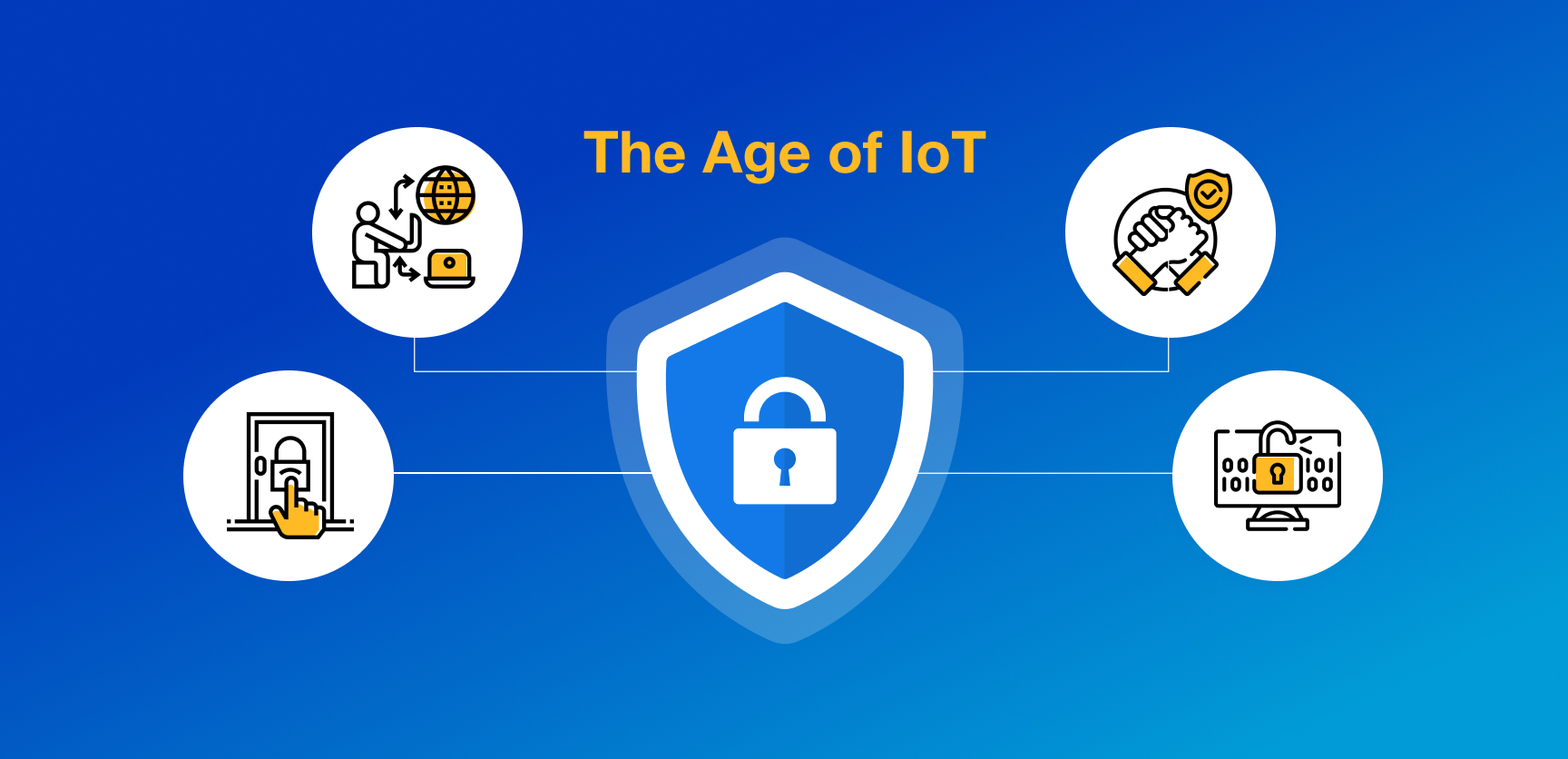- Product
-
Solution
-
By Industry
Cybersecurity solutions tailored to your industry’s needs.
-
- Resources
-
Books
Our ultimate guides and playbooks
Solution Briefs
Overview of PureDome’s functionality
-
Quizzes
Assess your cybersecurity readiness
Case Studies
PureDome customer success stories
Newsletter
Subscribe to the PureDome newsletter
-
- About Us
- Partner
- Pricing
- Download
Navigating the Evolving Landscape of Cybersecurity Trends
-
Aiman Ikram
-
12 Mar 2024
- 5 min read

.jpg?width=1728&height=836&name=Image%2001%20(1).jpg)
The modern technology landscape is marked by one continuing trend: change. As new trends like Generative AI emerge, businesses and technologies must evolve to keep pace with their cybersecurity implications or expose themselves to new risks.
In this article, we will take a look at some of the key trends that are shaping the landscape of tomorrow. Technologies like Artificial Intelligence, 5G, the Internet Of Things (IoT), etc., are simultaneously revolutionizing businesses and introducing new risks. We have also seen a massive shift towards remote work post-pandemic, reshaping how organizations approach the network perimeter.
As cyberattacks increase sophistication, staying on top of these trends is essential to keep cybersecurity controls pace. This article analyzes these trends and provides insights for CISOs, CTOs, and other technology leaders to help them navigate modern-day challenges.
The Rise and Dominance of Artificial Intelligence (AI)

AI has dominated tech conversations for 18 months since ChatGPT emerged, becoming the fastest growing app in history. Tech giants like Amazon, Microsoft, and Google are all engaged in an AI arms race to harness the power of this game-changing technology and gain a market advantage. At the same time, AI has become a double-edged sword, introducing new types of risks and vulnerabilities that were not present before.
The ability of AI to analyze massive amounts of information to derive insights is a game-changer within cybersecurity. CISOs and Cybersecurity teams now have access to cutting-edge machine learning algorithms that can detect and stop sophisticated attacks from harming the network. Unfortunately, cybercriminals have also harnessed this power to improve the sophistication of their attacks.
We have seen AI-powered deepfakes that can easily fool employees as a new type of social engineering fraud. Additionally, AI can automate existing cyber attacks, such as phishing and Denial of Service, as evidenced by the massive increase of such attacks in 2023.
The Age of IoT
The Internet of Things (IoT) has introduced smart devices and homes into our lives, with an estimated 15 billion IoT devices connected as of 2023. These lightweight devices can provide intelligence to “smart” appliances and homes, giving users unparalleled comfort and convenience. Unfortunately, the rise of IoT has also dramatically introduced the attack surface, with each connected device presenting a potent entry point for cyber attacks. The lightweight nature of these devices means they lack the storage or processing power to house modern cybersecurity solutions and thus become vulnerable to attacks.

We have already seen attacks like the Mirai botnet in 2016, in which millions of IoT devices were taken over and weaponized in a Distributed Denial of Service (DDOS) attack disrupting services across the United States. Take a look at this article on the challenges and solutions when securing IoT devices.
The Dynamics of Remote Working
COVID-19 led to a massive shift in modern work, with companies moving towards and embracing a remote form of working. While recent years have seen companies attempting to roll back this trend and encourage employees to move back towards the office, it is clear that this trend is here to stay. Remote working and its benefits also introduced new vulnerabilities and challenges for cybersecurity teams across the globe.
Employees were expected to connect to the corporate networks via Virtual Private Networks (VPNs) from corporate or personal devices, dramatically increasing the attack surface. This opportunity was not ignored by cyber criminals, with a massive increase in cyber attacks that targeted remote workers. It is clear that the remote/hybrid model is here to stay, and companies must re-architect their network and relook at the security perimeter to secure this new way of working effectively. In addition to technical controls, security awareness is also essential, as remote workers are at a higher risk of being socially engineered due to isolation from their work colleagues and the work environment. If not stopped in time, these attacks usually serve as entry points for more severe security breaches, such as ransomware.
The Rise of Cyber Warfare
The Russia-Ukraine conflict saw warfare being conducted in both the real world and the cyber one, as nation-states used cyber attacks as a key weapon against others. Critical infrastructure and government facilities were targeted in nation-state-sponsored attacks to weaken infrastructure and cause disruption at a societal level. These attacks are not just restricted to government targets and can spill over to the private sector, with thousands of organizations caught in cyber warfare's blast radius.
Ransomware remains a significant threat in cyber warfare as nation-states can weaponize such attacks to disrupt critical industries and infrastructure without demanding any ransom. Such attacks have the potential to bring government functions to a halt and decrease the public’s trust in its leaders, all of which are the goals of warfare. We can expect such attacks to continue during the conflict as more nation-states weaponize malware against their enemies.
How Businesses Should Respond to These Trends
The trends we have mentioned are just a few but each of them will have a pivotal impact in shaping the future of the technology landscape. AI’s impact on cybersecurity, the increased attack surface of IoT, remote working, and cyber warfare are all realities businesses must understand and protect against. Cybersecurity strategies must incorporate these threats to ensure sufficient security controls are enforced against them. A multi-layered approach to technology, governance, training, and security awareness culture is needed.
A few of the key strategic controls that must be implemented are:
- Organizations must adopt a Zero-Trust Network Access (ZTNA) approach toward the network perimeter. The traditional “Trust but Verify” approach no longer holds and has been replaced by the new Zero Trust approach of “Never Trust, Always Verify.” This approach does not assume implicit trust and authenticates every request based on various contextual data. The benefit of ZTNA is that it can accommodate the flexibility required by remote workers connected from various devices and locations without compromising the security posture.
- AI-driven cybersecurity solutions must be implemented to combat AI-powered cybercrime. For example, attacks such as deepfakes, where synthetic media is used to trick users, can be detected by AI-powered solutions. Additionally, AI-powered endpoint solutions can detect new types of malware that use generative AI to bypass traditional security products. AI can also enhance threat intelligence by using power machine learning algorithms to baseline the environment and identify when deviations happen. Modern environments generate too much data for human analysts to keep pace, and this is a crucial area where AI can be a game-changer.
- Organizations with dependencies on IoT devices must put in defense-in-depth approaches for these devices, consisting of inventory, secure configuration, monitoring, access control, etc. This ensures that the risk of IoT can be sufficiently mitigated and form part of an overall cybersecurity strategy.
- Collaboration and information sharing within the cybersecurity community must be encouraged, especially within the public and private sectors. The risk of nation-state attacks and cyber warfare means that it is essential for organizations to have actionable knowledge of threats and best practices. Governments and organizations can benefit from collective intelligence and improve cybersecurity by facilitating rapid information sharing.
- Lastly, employee training and awareness are among the most critical aspects of any modern cybersecurity strategy. Most, if not all, cyberattacks start by socially engineering human targets, making awareness an essential control. Organizations must continue to improve their security culture and educate employees about new types of attacks and threats.
The landscape of cyber threats is in constant flux, with newer and more sophisticated attacks emerging regularly. Organizations must face this challenge by adopting the best practices outlined in their article, enabling them to adapt to the changing threat environment. Organizations can reduce their risk and exposure to the new generation of cyber attacks by adopting a proactive approach to cybersecurity.
Conclusion
Organizations must face these new trends and challenges to remain competitive as modern technology evolves. AI, IoT, Remote Working, etc., are not passing trends but represent a paradigm shift in how technology and businesses will work. Adapting to these trends requires a balanced approach that combines risk management, technology, and cutting-edge security controls to ensure businesses are ready for tomorrow’s security challenges.